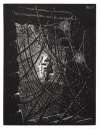Pierre
Auguste Renoir
Pierre-Auguste Renoir, a master Impressionist, captured life's joyful moments with his vibrant brushwork and warm palette. If you’re looking for original Renoir paintings and prints for sale, or would like to sell, request a complimentary valuation and explore our network’s most in-demand works.
Pierre Auguste Renoir art for sale
Discover Pierre Auguste Renoir prints for sale, exclusively available through our private network of collectors. Explore signed and unsigned screenprints, lithographs, digital prints, and rare editioned proof prints by era-defining blue chip artists.
Sell Your Art
with Us
with Us
Join Our Network of Collectors. Buy, Sell and Track Demand
Biography
Born into a humble family in Limoges, France, in 1841, Renoir demonstrated an early predilection for art, drawing on the walls of his home with chalk. At the age of 13, he took an apprenticeship with a porcelain painter, which honed his skills in the decorative arts. Seeking formal training, Renoir eventually saved enough money to move to Paris and study under Charles Gleyre. It was there that he met fellow students Claude Monet, Alfred Sisley, and Frédéric Bazille, with whom he would later forge the Impressionist movement.
Throughout the 1860s, Renoir's artistic development was marked by experimentation with light and shadow, a precursor to the Impressionist style. By the early 1870s, Renoir's work fully embraced Impressionism, as seen in his masterpiece La Loge, where he depicted the interplay of light and the vibrancy of Parisian society with a newfound luminosity and charm.
Renoir's participation in the first Impressionist exhibition in 1874 solidified his reputation as a leading figure in the movement. His work from this period is characterised by its focus on leisure and pleasure, with famous works like Dance At Le Moulin De La Galette and Luncheon Of The Boating Party epitomising the joie de vivre of the era.
In the 1880s, Renoir's style began to evolve, showing an increased interest in line and composition. This “Ingres period,” as it was later known, reflected a temporary departure from the looser brushstrokes of Impressionism. However, by the end of the decade, he returned to the supple, light-infused style that had originally made him famous.
Renoir's legacy extends beyond his contributions to Impressionism. His works have been showcased in major exhibitions worldwide, and his influence can be seen in the generations of artists who followed. His paintings celebrate the beauty of the world around him, from the lush landscapes of the French countryside to the intimate moments of human connection. Renoir's art remains a testament to the enduring allure of Impressionist aesthetics, a celebration of life's simple pleasures rendered with exquisite grace and sensuality. Through his masterful canvases, Renoir continues to inspire and captivate art lovers, affirming his place as a timeless icon of art history.























